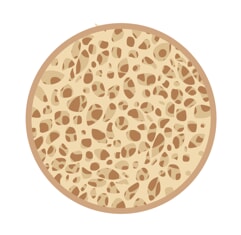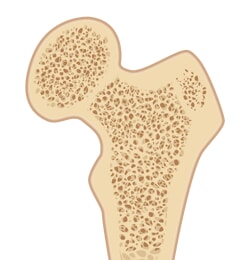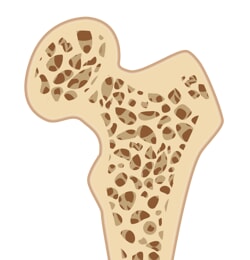Osteoporosis Clinic
The Shannon Osteoporosis Clinic in San Angelo offers diagnostic services, osteoporosis care, osteopenia care and fracture education. If you are older than 50 and have had a fracture/broken bone or your doctor feels you will benefit from a bone health evaluation, the Shannon Osteoporosis Clinic can help guide you. Our team provides patients with a personalized plan to reduce the risk of fractures.
What Is Osteoporosis?


Osteoporosis is a bone disease in which bone is lost or not enough bone is made, resulting in thinning bone (or low bone density). As a result, bones become weak and can fracture or break easily. The most common type of fracture is the fragility fracture, which is defined as low trauma impact or a fall from a standing height. Though fragility fractures can occur anywhere in the body, the most common sites are: the wrist, the hips, and the spine. Many fragility fractures go unnoticed by patients.
Risk Factors for Osteoporosis:
- Age: The older you get, the greater the risk.
- Race: More common in you are of white or Asian descent.
- Gender: One in two women and one in four men are likely to develop osteoporosis.
- Family History: If someone in your family has had osteoporosis or a fragility fracture.
- Lifestyle: Inactive lifestyle leads to osteoporosis.
- Diet: A diet low in calcium and vitamin D can cause osteoporosis.
- Smoking: The longer and more often you smoke, the greater your risk for osteoporosis.
Long-Term Effects


Many people don’t realize they have fragility fractures. If left undetected, Osteoporosis can have serious effects on factors including pains, loss of mobility and abnormal Spinal Curvature.
As osteoporosis progresses, the spine curves, which can result in back pain, height loss and difficulty breathing
Osteoporotic bones take longer to heal than healthy bones, which results in people unable to move like they used to.
What Can Be Done?
With a correct diagnosis from the Shannon Osteoporosis Clinic and proper treatment, patients can often regain bone strength.
What can I expect?
In the initial visit, your provider will ask you questions in order to obtain a thorough and accurate medical history. You will receive a physical exam and possibly lab work to further evaluate how to care for you.
Your bone health will further be determined by a DEXA machine. The DEXA machine uses x-rays to measure your bone density and will give a diagnosis of either osteoporosis (extremely low bone mass), Osteopenia (low bone mass), or healthy bone.
You will be scheduled for a follow-up visit where your doctor will help evaluate your treatment and continue the planning process of care.
What Is The DEXA Procedure?
A DEXA Bone Density scan can help your provider confirm a diagnosis of osteoporosis and the severity of bone loss. You will need to wear loose-fitting, comfortable clothing without metal fasteners or buttons, preferably clothing with an elastic waist-band or drawstring. Sweats or exercise clothing is ideal. The test usually takes about 15 minutes and uses very little radiation.
Similar to an MRI scan, you will lay on the DEXA table while the staff positions you for optimal alignment. A maximum of three scans will be taken to determine your bone health.
For more information, contact:
Shannon Osteoporosis Clinic
Inside Shannon Clinic Jackson
2237 S. Jackson St.
San Angelo, TX 76904
325-747-2036

